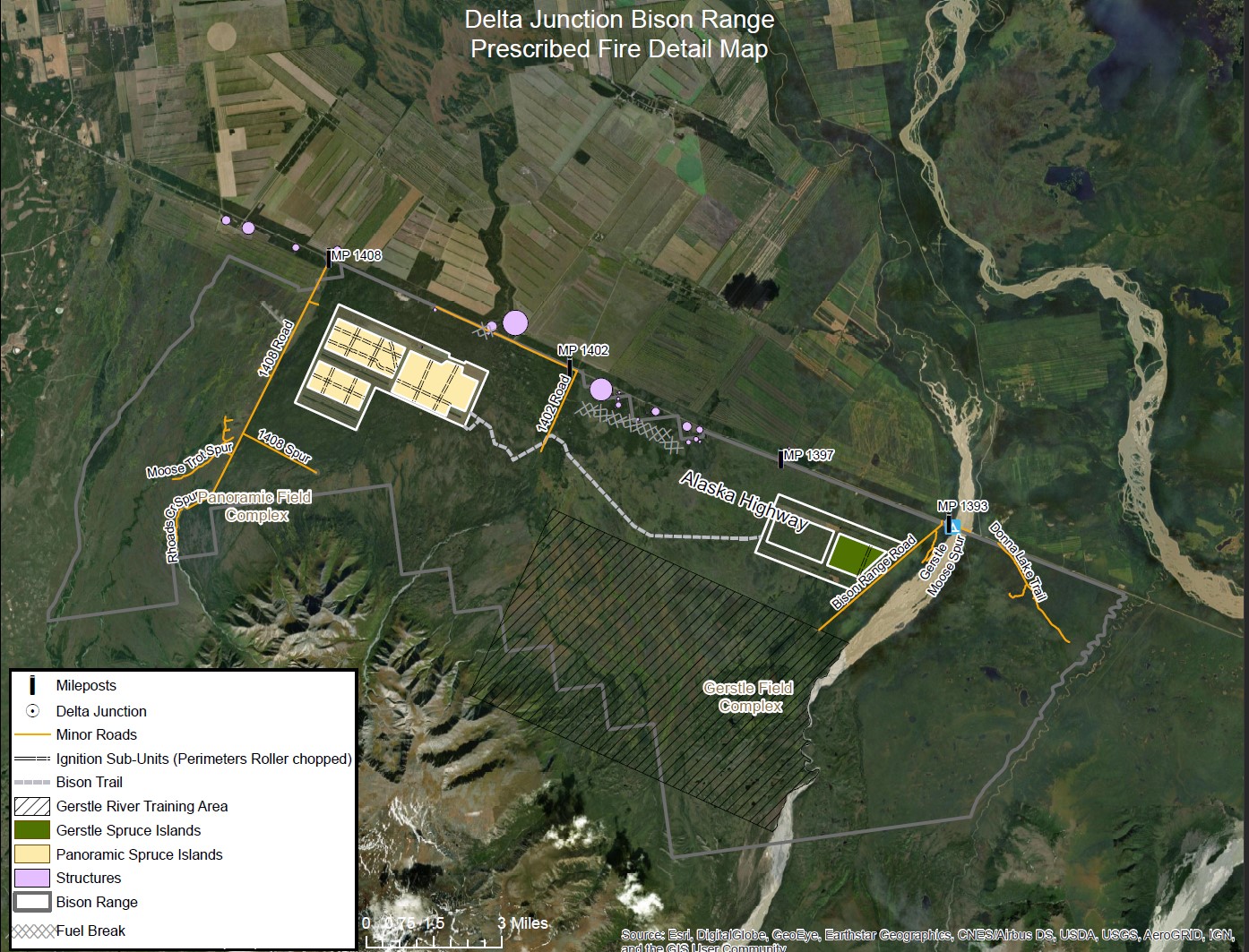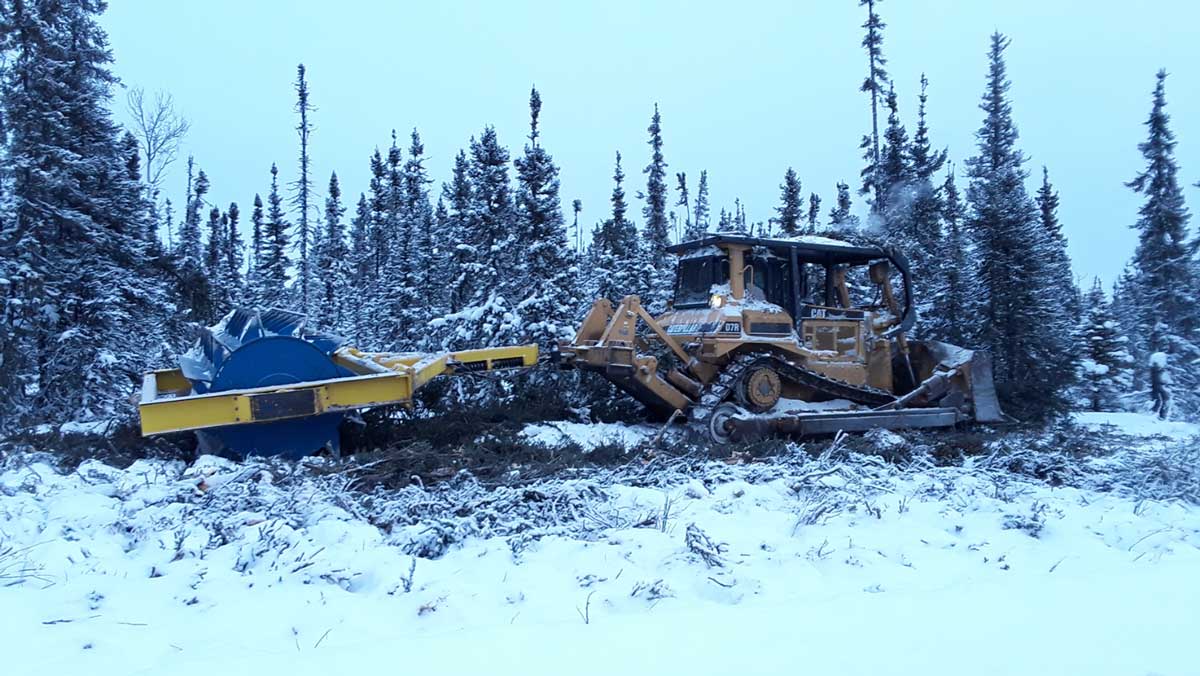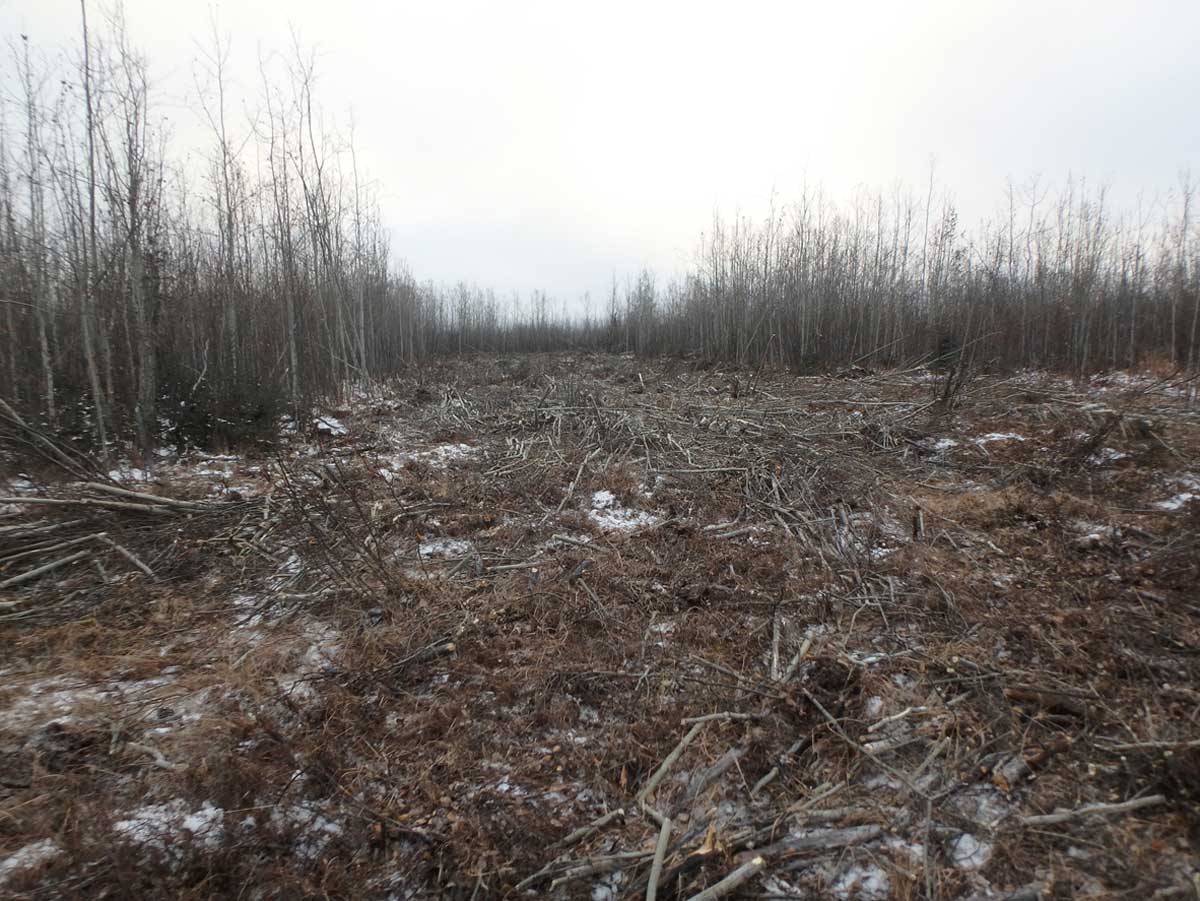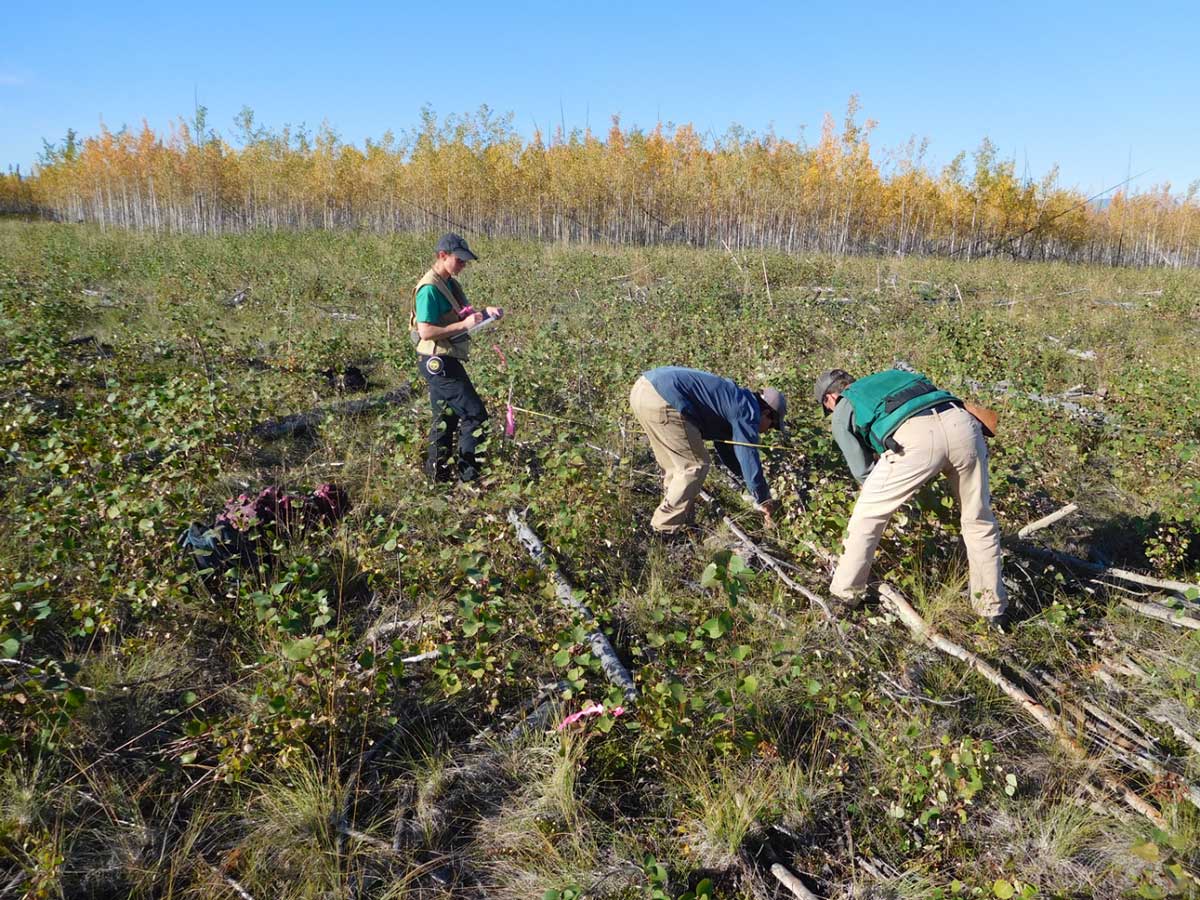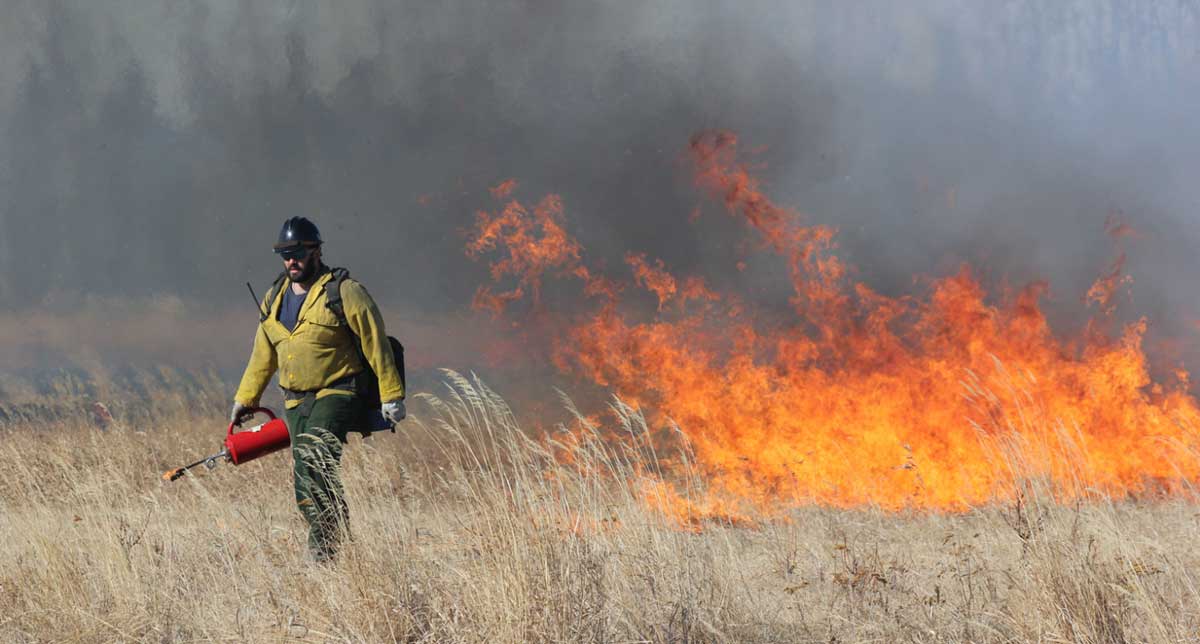Wildlife Habitat Enhancement Projects
Delta Junction Bison Range
Burning the 'Spruce Islands' is planned for 2025 to create more habitat for moose and upland birds.
ADF&G to Expand Habitat with Prescribed Burns in Delta Junction Bison Range
The Alaska Department of Fish and Game (ADF&G) plans to enhance wildlife habitat within the Delta Junction Bison Range (DJBR) by conducting prescribed burns in black spruce stands within the Panoramic and Gerstle Field Complexes. These spruce stands, surrounded by grass and shrub fields, will be treated to restart forest succession, increasing available forage and habitat for game species in an area easily accessible for hunting and wildlife viewing.
The prescribed burns will be conducted in partnership with the Alaska Division of Forestry & Fire Protection (DOF), which provides the expertise, personnel, and resources necessary for safe and effective prescribed fire operations.
Prescribed Burn Plans & Safety Measures
Four black spruce units, ranging from 460 to 1,050 acres, will be treated. To prepare, ADF&G and DOF have implemented mechanical treatments to create wide fuel breaks, allowing safe ingress and egress for personnel, as well as additional ignition and suppression points. Fuel breaks also protect adjacent private lands south of the Alaska Highway and improve access for firefighting equipment.
Burns will only be conducted under specific weather and wind conditions to minimize the risk of spot fires and limit smoke impacts on nearby communities and highways. Fire personnel will monitor conditions continuously throughout the operation.
Smoke Management & Public Notifications
ADF&G works closely with the Alaska Department of Environmental Conservation (DEC) to comply with the Clean Air Act and the Enhanced Smoke Management Plan for Alaska. Before and during the burns, ADF&G will coordinate with DEC to monitor air quality and ensure minimal impact on residents, highways, and other sensitive areas.
Because burning black spruce produces significant smoke, operations will only proceed when winds are forecasted to carry smoke north, away from homes and the Alaska Highway. However, wind shifts are possible. If smoke drifts toward populated areas, ADF&G will post public notices so that individuals with health concerns can take precautions. Air quality monitors will be placed in key locations to track particulate levels and improve community notifications.
Public Information & Burn Timeline
ADF&G has been using local media, including the Delta Wind, town flyers, and akfireinfo.com, to keep the public informed about burn schedules. Traditionally, prescribed burns in cleared fields occur in late April or May, while black spruce stands are expected to be burned in June.
DOF conducts these operations annually with extensive safeguards in place. Burns will take place within the Gerstle and Panoramic fields, located between Mile 1408 and 1393 of the Alaska Highway, in the coming years.
For updates, visit akfireinfo.com or follow local announcements.
Spring field burns continue to support bison.
Prescribed burning is planned to continue next spring on the fields within the Panoramic and Gerstle Complexes as has been done in the past. Prescribed fires have been conducted in the fields since 2017. The field burns focus on grass, brush, and tall shrubs within the cleared portions of the field complexes. The intent of using prescribed fire in this area is to enhance maintain grass forages for bison and hunter access.
Contact Information
John Wagoner, Conservation Coordinator - Wildlife Habitat Enhancement & Spatial Analysis Program
john.wagoner@alaska.gov
DJBR Prescribed Fire Detail Map (PDF 438 kB)
Winter work to benefit moose and grouse
The Alaska Department of Fish & Game continues habitat work through the cold days of winter. In partnership with State Forestry, we roller chop aspen stands that regenerated after the 1994 Hajdukovich Fire inside of the Delta Junction Bison Range. This rolling 'Mad Max' style implement is pulled by a D7 Caterpillar over the frozen ground to shear off and then chop up these young trees that are too tall for moose to eat. Aspen trees within a stand all share the same root system. When the top - or tree part - of this plant is killed, a hormone called auxen is released to stimulate the 'root suckers' to send up new shoots. In this way, aspen seedlings regenerate the site. Across this area, ADF&G has done several iterations of this work to create a mosaic of different age classes of aspen to support moose and also provide for the habitat needs of grouse. Wildlife need different cover types for their life stages and food requirements in addition to shelter and cover from predators.
The D7 Caterpillar weighs 40,000 pounds. The roller chopper weights 24,000 pounds and holds 1,763 gallons of glycol for a total weight of 40,000 pounds. This operation crushes and chops aspen trees up to 7 inches in diameter with 80,000 pounds to leave a wake of tree parts with space in between for moose to walk and tree seedlings to grow.
Although it's not easy for people to walk through this, the moose seem to do alright. ADF&G conducts pellet surveys in the spring to evaluate 'moose use' during the previous year. These transects are permanent lines 50 m long where moose pellet groups are counted within a one-meter width along the transect to provide biologists with an understanding of how much the moose are using their new food source.
ADF&G staff count seedlings to evaluate the effectiveness of this treatment. Once the seedlings grow to 1 meter in height, they are available as winter forage for moose. This usually happens within 2-3 years of roller chopping. The site is then 'available' for browsing until the trees grow too tall for moose to reach at about 15 years after treatment.
Spring field burns support bison, moose, and grouse habitat
Prescribed burning is planned to continue next spring on the fields within the Panoramic and Gerstle Complexes as has been done in the past. Prescribed fires have been conducted in the fields in 2017, 2018, and 2019, with several burns implemented in prior years as well. The field burns focus on grass, brush, and tall shrubs within the cleared portions of the field complexes. The intent of using prescribed fire in this area is to enhance habitat for bison, moose, and grouse in the near term by stimulating regeneration of grasses, willow and aspen.
State Forestry firefighters along with several ADF&G red carded staff burn several hundred acres each spring to keep fresh forage available for wildlife.

